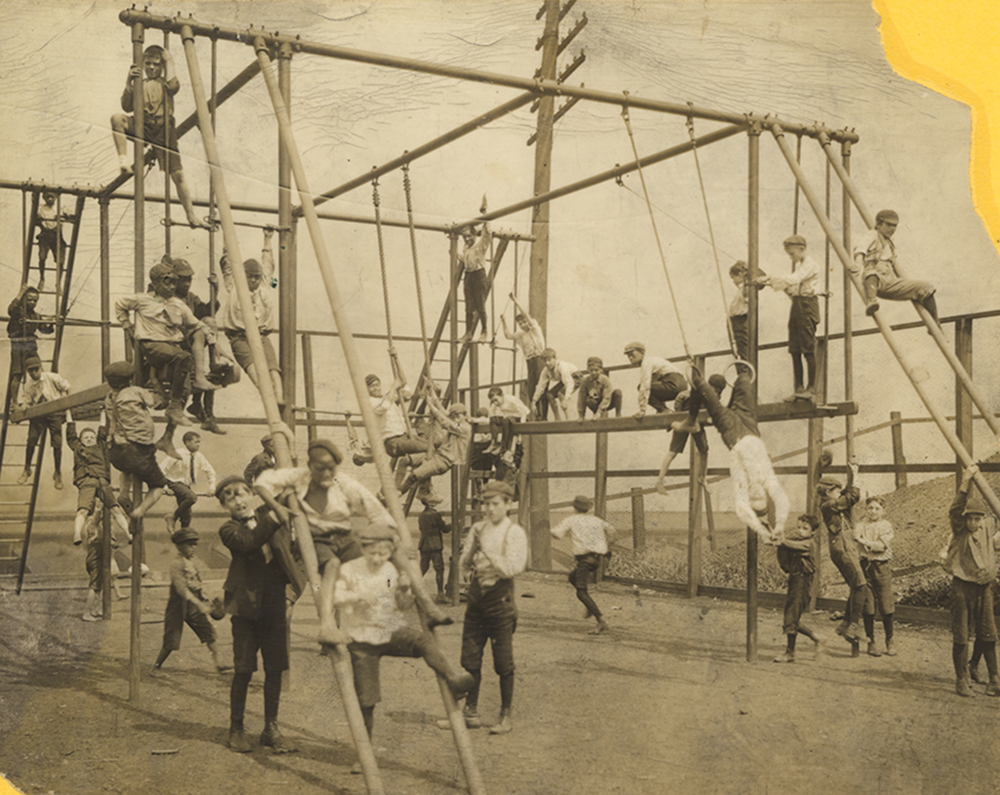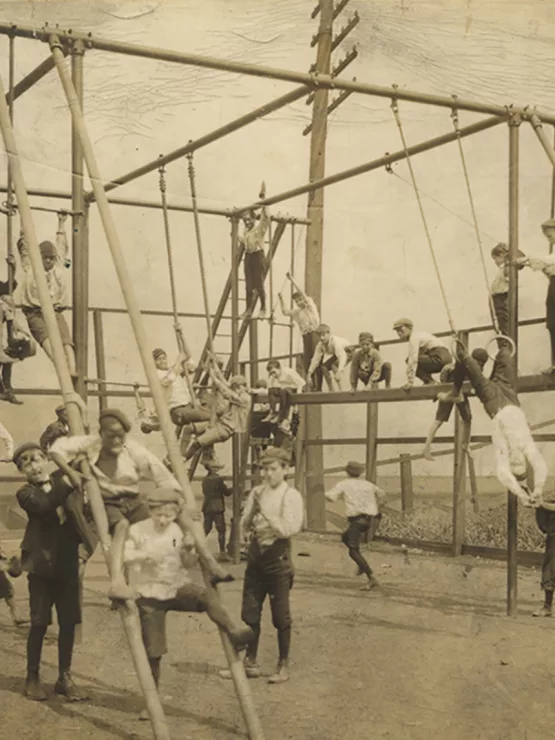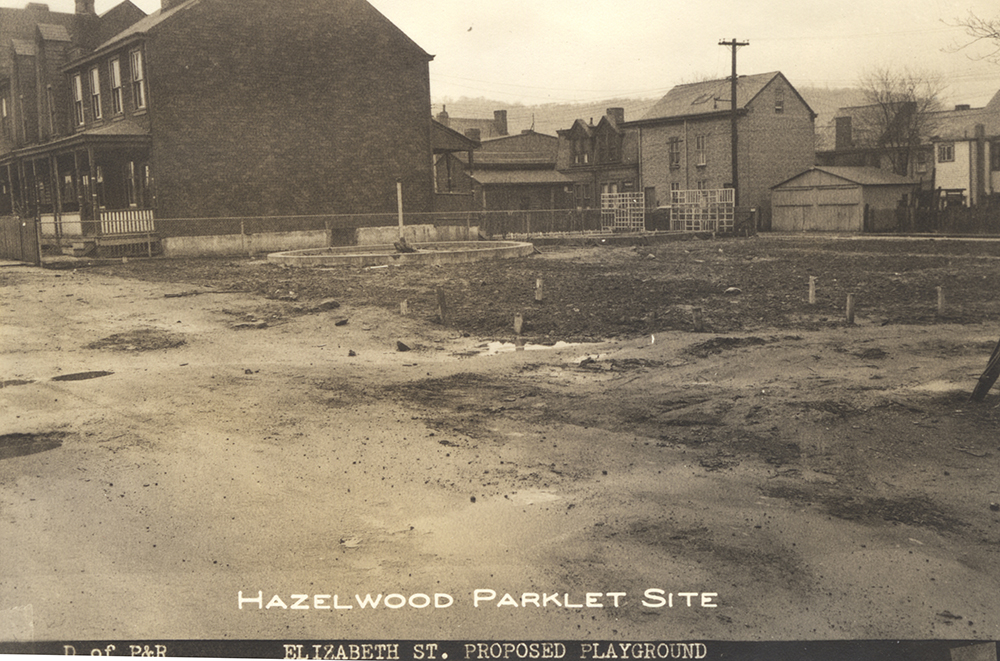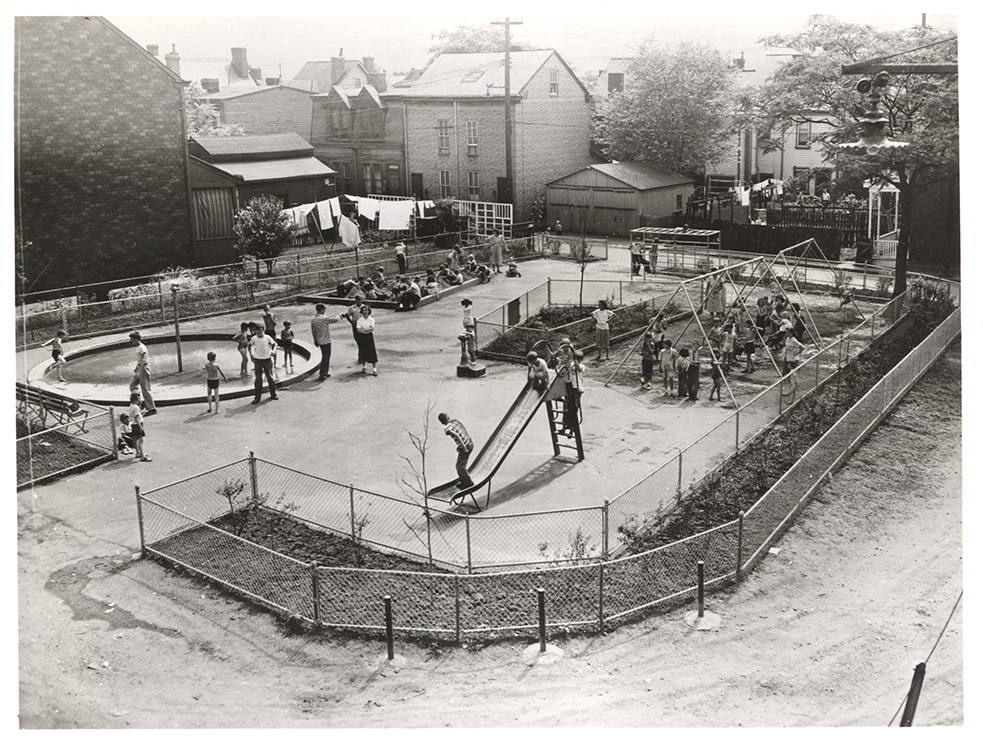The History Center supports the NFL’s PLAY 60 campaign, which encourages kids to be active 60 minutes each day. On Saturday, Feb. 6, the History Center will fill all five floors of the museum with activities designed to get the whole family moving, including a mini NFL Combine and a touchdown dance contest.
You might think that play comes naturally to children and that it’s only recently that kids need encouragement to put aside technology and become active. But, that’s not the case. In turn of the century Pittsburgh, many children, especially in the poorer sections of the city, had no green space in which to play and when taken to a playground, didn’t know what to do.

In 1896, the Civic Club of Allegheny County began to take up a number of civic betterment causes, one of which was the lack of play areas for children. They began by opening school yards in the summer as playgrounds and staffing them with newly minted “kindergarteners,” women who ran programs for children. Targeting mill neighborhoods like the Strip District and the South Side, the Civic Club was surprised to find resistance from parents who saw no value in play and wanted their children to have vocational training instead. Many children at an early age were already working in cigar factories and at industrial jobs. The kindergarteners reported that, “children on some playgrounds did not know why they were there.” Slowly they made inroads, teaching the children songs and games, folk dancing and gymnastics, in addition to skills like sewing, drawing, and carpentry. By 1908, they were able to organize a great “play festival” in Schenley Park, which was attended by 3,000 youngsters from across the city.
Once the school playgrounds were up and running, the women campaigned for recreation parks – much larger areas for children to congregate and play. The abandoned Bedford Basin reservoir in the Hill District was filled in and became Washington Park. Arsenal Park also opened in Lawrenceville and other parks opened on the South Side.
After WWII, the Allegheny Conference on Community Development took on a similar role, campaigning for a wide range of civic improvements including the development of “parklets.” Through their Pa Pitt Partners program, vacant parcels across the city were developed into small playgrounds for the burgeoning number of Baby Boomers. With the help of these programs, children had greater access to safe, accessible areas in which to play.
Make it a point to get outside and be active every day and on Feb. 6, join us for PLAY 60, presented by DICK’s Sporting Goods.
Lauren Uhl is the museum project manager & curator of food & fitness at the Heinz History Center.
The History Center’s Food & Fitness program is sponsored in part by




